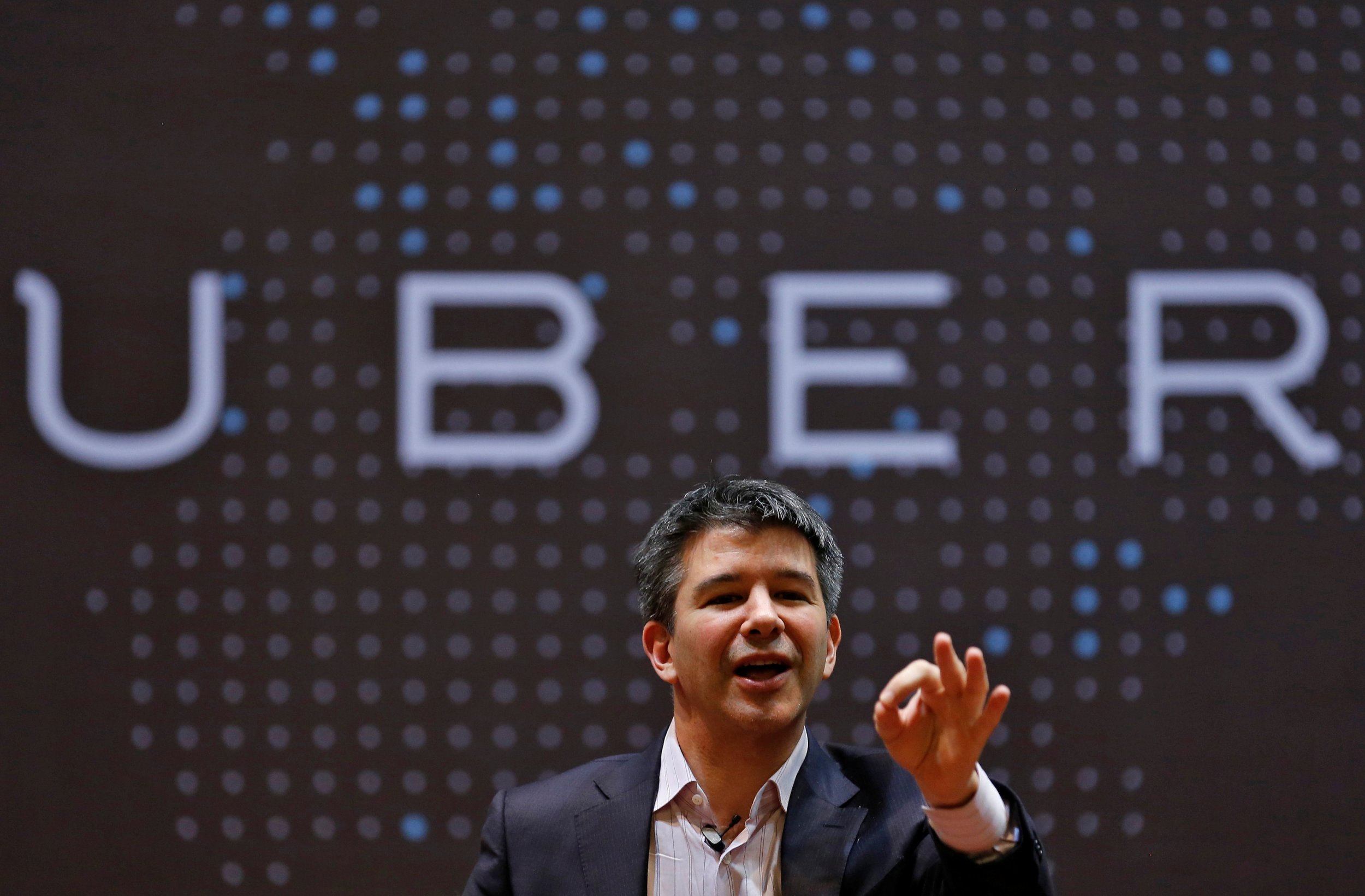
Quora Questions are part of a partnership between Newsweek and Quora, through which we'll be posting relevant and interesting answers from Quora contributors throughout the week. Read more about the partnership here.
Answer from Aaron Yip, software engineer:
How has Uber's corporate chaos in 2017 actually affected ridership? Not by very much it seems; if not for the extensive press coverage, an analyst at Uber might have thought it was a small hiccup—growth numbers that stuttered a bit and recovered within a couple of weeks.
Obviously internal stats were not disclosed, but we can look at estimations by external data collectors and do lots of rough back-of-napkin calculations.
SimilarWeb first gives us a look at Uber web search data: (uber.com Traffic Statistics).
This initially looks promising to those folks bearish on Uber—the site shed 55 percent of its visits between its peak and today— but then you may notice the trend began well before the 2017 chaos and consequently may actually be more of a testament to Uber's successful October marketing push.
By comparison, SimilarWeb's page on competitor Lyft: (uber.com Traffic Statistics).
If we ignoring Uber's spike in traffic October 2016, the rest of the traffic trends seem to be seasonal adjustments—i.e. both Uber and Lyft fell overall in Feb 2017, as did numerous other sites.
Interestingly though: organic search keywords "delete uber account" jumped up to being the 12th most popular traffic source from 177th; and the support portal page for deleting the app accordingly jumped too up to 14th most visited page on the site, up from 82nd. Both are characteristic of the #DeleteUber campaign.
But web is at best a proxy estimate for mobile apps.
iOS numbers, if we switch over, tell a more compelling story for Lyft. Lyft really benefitted from Uber's chaos. SensorTower demonstrates this effectively: (Lyft - App Store revenue & download estimates - US).
Note the Jan 30th spike up to 4th place from the mid-40s and then lasting power in the 15–30s ranks afterwards. As mentioned in Lyft surges to the top 10 on Apple's App Store following the #DeleteUber campaign, Lyft downloads spiked up 78 percent to 98,000 for iOS. US. Lyft was having fun.
Zooming in, it becomes less rosy. After a few days of glowing publicity, Lyft quickly fell back down in Icarus fashion. Uber took a slight drop too, but the effects of the overall campaign seems temporary. Lyft did get a permanent boost — just not as big of one as it may have hoped for. You can think of app ranking tied to velocity of new users; Lyft needs permanent, higher velocity to catch up to Uber's higher base user count.
So what are the larger effects?
The New York Times reported a 200,000 number for users that deleted their Uber account. However Travis Kalanick says Uber has 40 million monthly active riders— 200k is hardly a dent.
The popularity position of the app suggests Uber's accumulating users at somewhere between 150k–400k installs per day (the high end comes from Nomura in The app boom is over). App installs are an inflated BS growth number though. Andrew Chen, who works on growth at Uber, wrote New data shows losing 80% of mobile users is normal, and why the best apps do better. Retention — loyal users — is crushingly low across most mobile apps. Nearly 80% of users drop within just three days and up to 95% over three months. Ouch.
For stronger apps and brands, retention numbers are higher — anywhere from 20 percent to 50 percent long term retention—but let's just assume the steep drop-off curve for now. So the 11 million install rate per month in 2016 number for Uber that Nomura reported? That's actually closer to 2M and then down to 550K shortly after. For the lower estimates on install rate range, we can cut these estimates in half—maybe 250K long term loyal users gained per month. A bad extreme estimate for Uber is that it lost a month of growth in loyal users. On the other hand, the optimistic extreme for Uber is that it lost a percentage point or two of shallow install users — half a day of installs.
What actually happened? Probably something in the middle.
Uber growth took a beating worth a week or two of progress and then kept trucking along. In day-to-day experience for most riders and drivers across the world, people didn't seem to have really noticed.
One final note: these numbers don't directly connect the dots back to number of rides and revenue. For that, we need time-based user surveys (based on a quick scan in academic literature, that seems unlikely) or for Uber to release its internal numbers (far more unlikely). But hopefully, this collection of public estimates and rough ballpark figures still offered a glimpse of the Uber narrative at the macroeconomic scale.
How has Uber's corporate chaos in 2017 actually affected ridership? originally appeared on Quora—the place to gain and share knowledge, empowering people to learn from others and better understand the world. You can follow Quora on Twitter, Facebook, and Google+. More questions:
- Turmoil at Uber: What does Uber have to lose if they fire Travis Kalanick?
- Uber: What will kill Uber?
- Ride Sharing: Which industry is ready to be disrupted?
Uncommon Knowledge
Newsweek is committed to challenging conventional wisdom and finding connections in the search for common ground.
Newsweek is committed to challenging conventional wisdom and finding connections in the search for common ground.
About the writer
To read how Newsweek uses AI as a newsroom tool, Click here.








